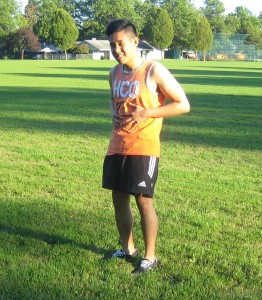Abdominal muscle tear is also called abdominal muscle strain. Generally, it is a condition which causes damage to the internal structures of the muscles of the abdomen. It can be partial or complete muscle tear. Furthermore, the abdominal muscles are located around the abdomen and the trunk and form the center muscles of the body.
Categories of abdominal muscle tear
- 1st degree tear- the muscle fibers are damaged or injured
- 2nd degree tear – severe damage or injury to the muscle fibers
- 3rd degree tear- the most complicated strain and complete rupture of the muscle
Causes
- Overuse of the abdominal muscle due to performing excessive strenuous activities at work or at home.
- Lifting excessive amount of weight without proper conditioning of the body
- Performing wrestling
- Using improper techniques in lifting weights and exercises
- Repetitively lifting heavy weight at work
- Excessive twisting of the body
Overuse of the abdominal muscle due to performing excessive strenuous activities at work or at home.
Symptoms
- At first, persistent stiffness and discomfort in the abdominal area.
- Severe pain in the abdominal muscle after performing strenuous activities
- Pain when attempting to stretch the abdominal muscles
- Swelling of the abdominal muscles
- Lastly, tenderness and muscle spasms of the abdominal muscles
Treatment
- Take plenty of rest. Generally, allow the muscle to cool down to lessen the inflammation. Avoid performing exercises that will result to pain or spasms of the abdominal muscles.
- Apply ice pack on the affected area for at least 15-20 minutes, 2-3 times every day to lessen the pain and the inflammation. Avoid ice directly on the skin. Wrap ice pack using a towel or a piece of cloth before placing to the area to prevent further irritation and worsen the condition. Another alternative is massage the area using ice in a circular movement for at least 15 minutes, 3 times every day for fast healing of the condition.
- Consume a diet rich in protein that includes poultry, lean meats, milk, cheese and eggs. Proteins make up muscle fibers and repair damaged muscles.
- Apply heat on the area after 24 hours. Heat can be in the form of heat lamps, heating pads and hot compress. Heat relaxes the muscles; lessen the stiffness and spasms of the muscles and for fast healing of the condition. Avoid heat directly on the skin to prevent burn.
- As the inflammation and the pain subside gradually stretch the muscle to prevent scarring of the surrounding tissue.
- Avoid heavy lifting or exercises while still in the healing process to prevent development of intestinal herniation and worsen the condition.
- Take the prescribed medication such as ibuprofen or Tylenol to lessen the pain and the inflammation. Another alternative is using muscle relaxants or gels to lessen the inflammation and the pain.
- Gradually return to normal activity with the help of the physical therapist. In addition, perform slight stretching exercises and restore range of movement of the affected area.
More Information
The details posted on this page on an abdominal muscle tear is for learning purposes only. To learn to manage this injury, enroll in a first aid course with one of our training providers.
FACT CHECK
https://www.epainassist.com/abdominal-pain/stomach/abdominal-muscle-tear
https://www.healthline.com/health/abdominal-strain
https://www.summitmedicalgroup.com/library/adult_health/sma_abdominal_muscle_strain/


